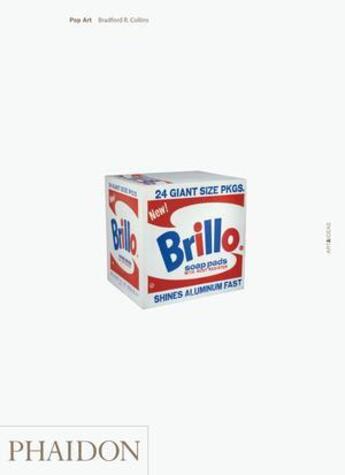Des idées de lecture pour ce début d'année !
Passionné(e) de lecture ? Inscrivez-vous
gratuitement ou connectez-vous pour rejoindre la
communauté et bénéficier de toutes les fonctionnalités du site !

Pop art arose in the 1960 in the major art capitals of America and Europe, revolutionary in its celebration of popular or mass culture. Artists such as Seurat, Toulouse Lautrec, Stuart Davis and Willem De Kooning had been interested in integrating popular imagery in their art, but they had transformed their source material into their own art - Pop artists let their sources speak louder than their art. Roy Lichtenstein's paintings based on comic books, Andy Warhol's on film stars, James Rosenquist's after billboards and Peter Blake's inspired by record albums celebrate their sources with the subtlest transformation into art. They keep both the subject and the stylistic devices of their sources, or allow the source imagery to be more apparent than the creative reworking by the artist.
This book presents the most important works of the movement, as well as explaining in what sense Pop was, and still is, a movement. Several unjustly neglected women artists are brought to the fore and the meaning of Pop's revolution is examined through the decades, across Europe and the US. Crucial for the artworks explored, the source materials of consumer culture and popular entertainment are also illustrated and Collins shows how they were used by artists to make their works. Indeed, the relationship between popular culture and Pop Art is explored from all angles, discussing its interpretation as critique or celebration of consumerism, mass production and contemporary graphic art; whether Pop is simply another manifestation of popular culture or subversive criticism of it.
Here Collins argues that although the focus of much Pop art was popular culture, some of the artists' responses were critical, some complicit and some ambiguous. And Pop artists also dealt with an extraordinary range of other individual, artistic and historical issues - from sex, love and death to aesthetics, from the Civil Rights Movement and the Vietnam War to feminism. Pop art was more of a mode, a way of making art than a movement in the narrow, strictest sense, and here Collins shows how artists were not constrained by shared values, as previous movements, but free of a heterogenity that has since been assumed. Pop was a watershed development in modern art because it represents the moment when large numbers of artists acknowledged that the media imagery of mainstream capitalist culture, from advertising to comics to movies, had become, whether they liked it or not, the stuff of their consciousness. Whereas the artists of the Renaissance, for example, had been steeped in Classical history, mythology and the Bible, the artists of the modern era had been progressively schooled in the visual imagery of mass culture, which thus formed the chief substance of their own internal image banks. Rather than resist the flotsam and jetsam floating around inside their minds in search of some pure, uncontaminated language that might wash it away, as so many of their avant-garde forebears from Kandinsky to the Surrealists to the Color Field painters had done, the Pop artists accepted it.
Il n'y a pas encore de discussion sur ce livre
Soyez le premier à en lancer une !

Des idées de lecture pour ce début d'année !

Si certaines sont impressionnantes et effrayantes, d'autres sont drôles et rassurantes !

A gagner : la BD jeunesse adaptée du classique de Mary Shelley !

Caraïbes, 1492. "Ce sont ceux qui ont posé le pied sur ces terres qui ont amené la barbarie, la torture, la cruauté, la destruction des lieux, la mort..."